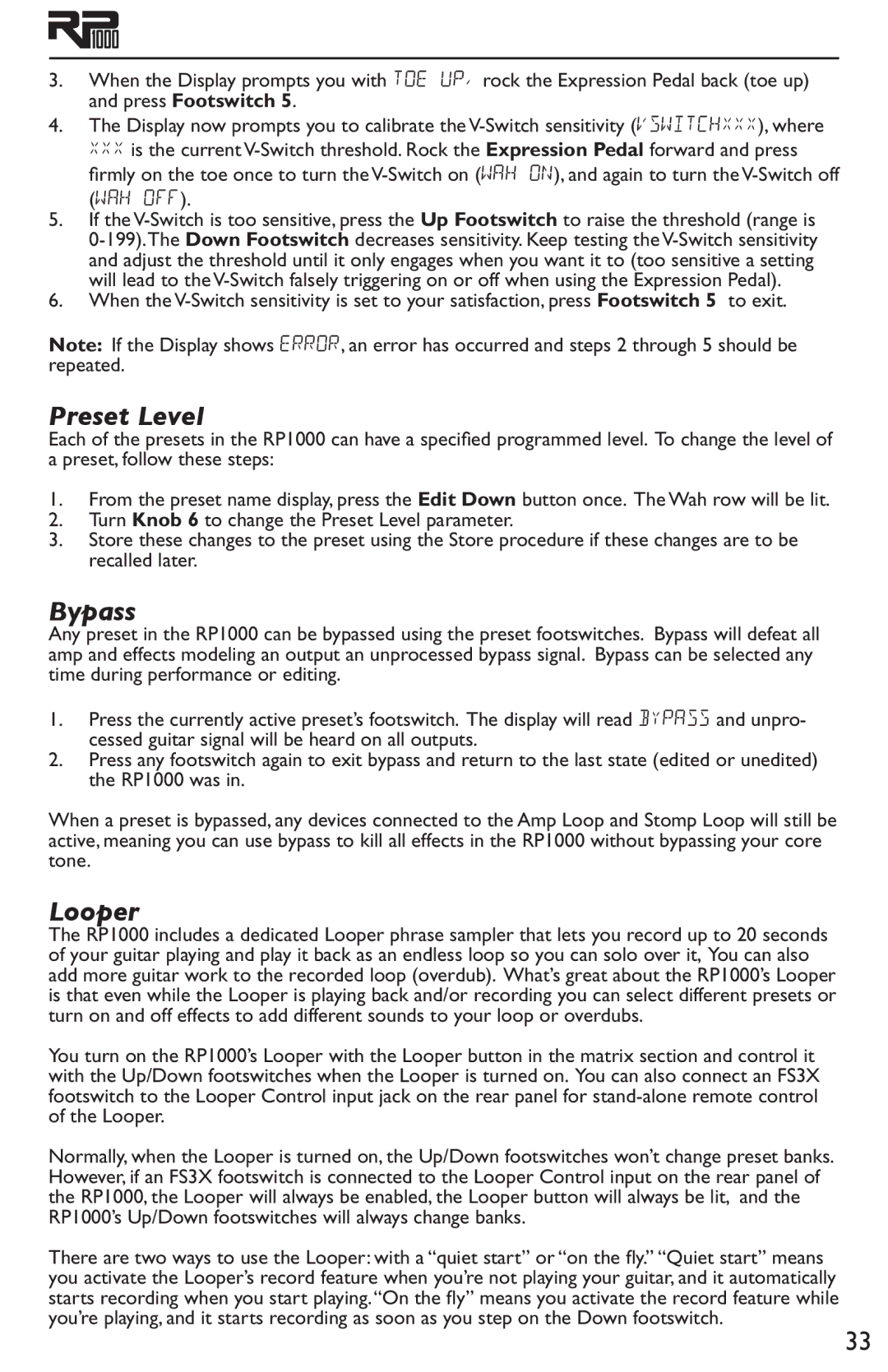3.When the Display prompts you with TOE UP, rock the Expression Pedal back (toe up) and press Footswitch 5.
4.The Display now prompts you to calibrate the
firmly on the toe once to turn the
(WAH OFF).
5.If the
6. When the
Note: If the Display shows error, an error has occurred and steps 2 through 5 should be repeated.
Preset Level
Each of the presets in the RP1000 can have a specified programmed level. To change the level of a preset, follow these steps:
1.From the preset name display, press the Edit Down button once. The Wah row will be lit.
2.Turn Knob 6 to change the Preset Level parameter.
3.Store these changes to the preset using the Store procedure if these changes are to be recalled later.
Bypass
Any preset in the RP1000 can be bypassed using the preset footswitches. Bypass will defeat all amp and effects modeling an output an unprocessed bypass signal. Bypass can be selected any time during performance or editing.
1.Press the currently active preset’s footswitch. The display will read BYPASS and unpro- cessed guitar signal will be heard on all outputs.
2.Press any footswitch again to exit bypass and return to the last state (edited or unedited) the RP1000 was in.
When a preset is bypassed, any devices connected to the Amp Loop and Stomp Loop will still be active, meaning you can use bypass to kill all effects in the RP1000 without bypassing your core tone.
Looper
The RP1000 includes a dedicated Looper phrase sampler that lets you record up to 20 seconds of your guitar playing and play it back as an endless loop so you can solo over it, You can also add more guitar work to the recorded loop (overdub). What’s great about the RP1000’s Looper is that even while the Looper is playing back and/or recording you can select different presets or turn on and off effects to add different sounds to your loop or overdubs.
You turn on the RP1000’s Looper with the Looper button in the matrix section and control it with the Up/Down footswitches when the Looper is turned on. You can also connect an FS3X footswitch to the Looper Control input jack on the rear panel for
Normally, when the Looper is turned on, the Up/Down footswitches won’t change preset banks. However, if an FS3X footswitch is connected to the Looper Control input on the rear panel of the RP1000, the Looper will always be enabled, the Looper button will always be lit, and the RP1000’s Up/Down footswitches will always change banks.
There are two ways to use the Looper: with a “quiet start” or “on the fly.” “Quiet start” means you activate the Looper’s record feature when you’re not playing your guitar, and it automatically starts recording when you start playing.“On the fly” means you activate the record feature while you’re playing, and it starts recording as soon as you step on the Down footswitch.
33
